Worldwide Award to the discovery of the Faida rock reliefs
Archaeology, Ancient Art, Reliefs, Aerial Photogrammetry, UAV, Mapping
All the following case study data were kindly provided by Alberto Savioli of the Department of Humanities and Cultural Heritage (Dipartimento di Studi Umanistici e del Patrimonio Culturale – DIUM) of the University of Udine.
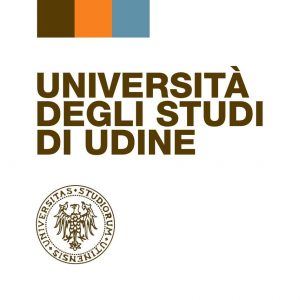
The discovery referred to in this article is that of ten monumental Assyrian bas-reliefs found in Faida, northern Iraqi Kurdistan, thanks to the “Kurdish-Italian Faida Archaeological Project” (KIFAP) conducted by the University of Udine together with the Directorate of Antiquities of Duhok.
The finding of these rock reliefs of the VIII Century BC won the title of the most important archaeological discovery of 2019, winning the prestigious 2020 International Archaeological Discovery Award “Khaled al-Asaad“.
Daniele Morandi Bonacossi, DIUM Professor of the University of Udine and the archaeological mission coordinator, received the international jury award last November 20, 2020. The ceremony took place in Paestum during the XXIII Mediterranean Exchange of Archaeological Tourism (BMTA), which also awarded the mission with the Special Award 2020 for the most voted archaeological discovery on the BMTA Facebook page.
The Assyrian Reliefs of Faida
It all began during the summer and autumn of 2019 when an archaeological team from the Italian-Kurdish mission identified a rock art complex of ten bas-reliefs dating back to the Assyrian era (VIII-VII century BC) in the site of Faida (Iraqi Kurdistan).
Of imposing size – almost 5 × 2 meters – four out of ten bas-reliefs found are in a good state of conservation due to the layers of soil deposited by the erosion of the hillside, which covered and therefore compromised the other Assyrian panels.
They extend along an ancient irrigation channel that was probably designed during the reign of King Sargon II: carved into the rock, upon them stand out the figure of the king and a whole series of gods and sacred animals (Fig. 1), all to show the reverence for the great Assyrian pantheon by the people, as well as celebrating the construction of the irrigation channel that would have guaranteed fertility to the ground and wealth for the inhabitants of those lands.
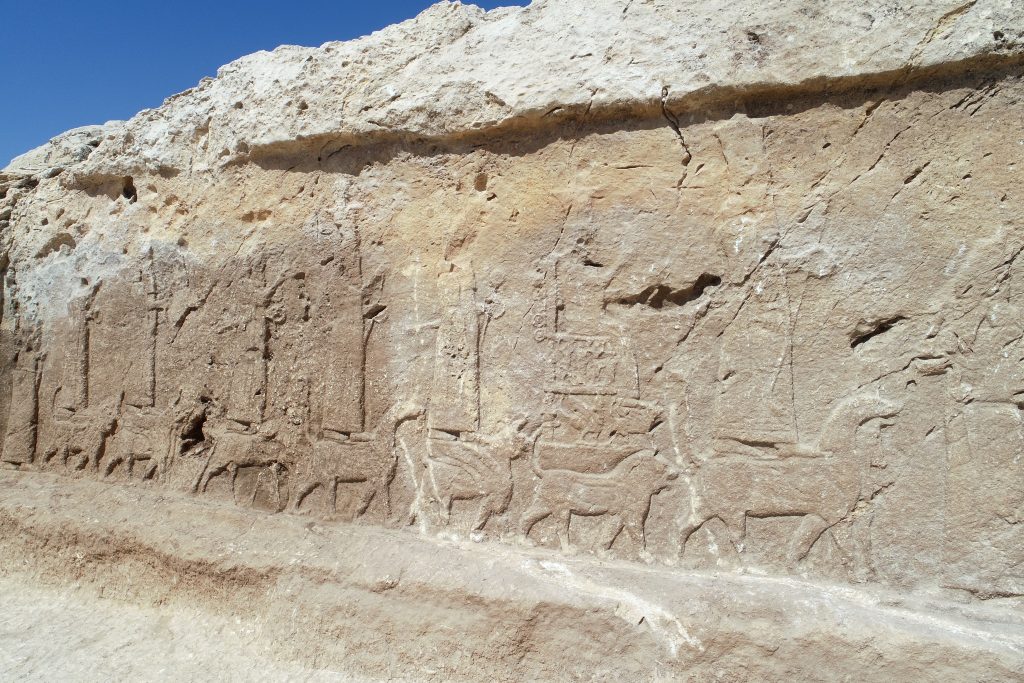
The survey and data collection
Alberto and the KIFAP project team took care of the photographic acquisition of the Faida’s bas-reliefs in a context that is certainly not optimal given the complex political situation in Iraq. Indeed, some factors influenced the different phases of the survey carried out with a drone DJI Phantom Pro 4, such as the constant loss of signal due to interference with radio waves and the consequent impossibility of performing automatic flight missions following a regular grid. The drone was equipped with a camera that featured a 13.2 CMOS sensor × 8.8 mm of 20 MP.
They shoot the pictures at multiple intervals (usually between 7 AM and noon), in manual mode and with direct sunlight, perpendicular to the ground and frontal to the bas-relief, at a 1-meter distance. Several Zephyr coded markers were also placed around the panels to acquire the corresponding 2D control points and improve the following 3D model accuracy (Fig. 2). Ultimately, the 3D coordinates were obtained with a differential GPS.
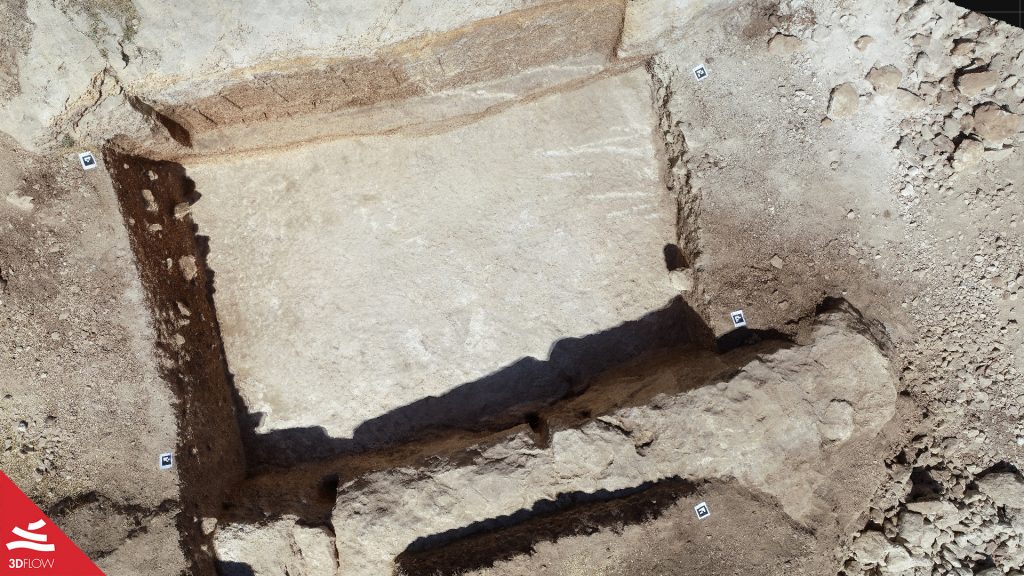
Processing data in 3DF Zephyr
Once the data collection was completed, the aerial pictures of each bas-relief taken were imported into 3DF Zephyr. As for the four best-preserved bas-reliefs, called “R4”, “R6-7” (these two panels were surveyed and processed in a single project), and “R8”, Alberto collected 185, 350, and 170 photos, respectively, in JPG format and with a resolution of 5472 × 3648 pixels. For all projects, the final mean error didn’t exceed 1 cm.
Here below, some screenshots of the 3D models generated with 3DF Zephyr:
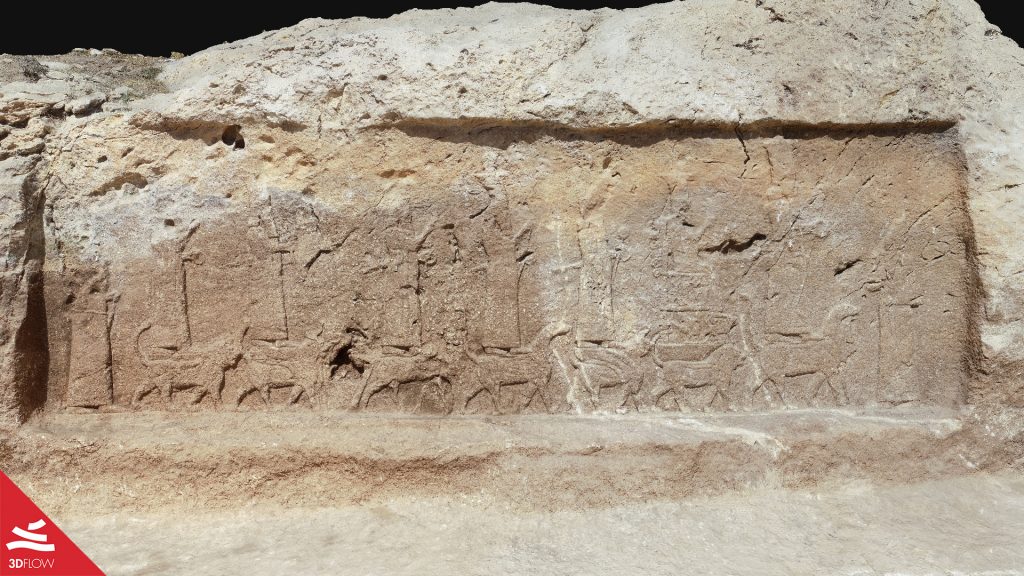
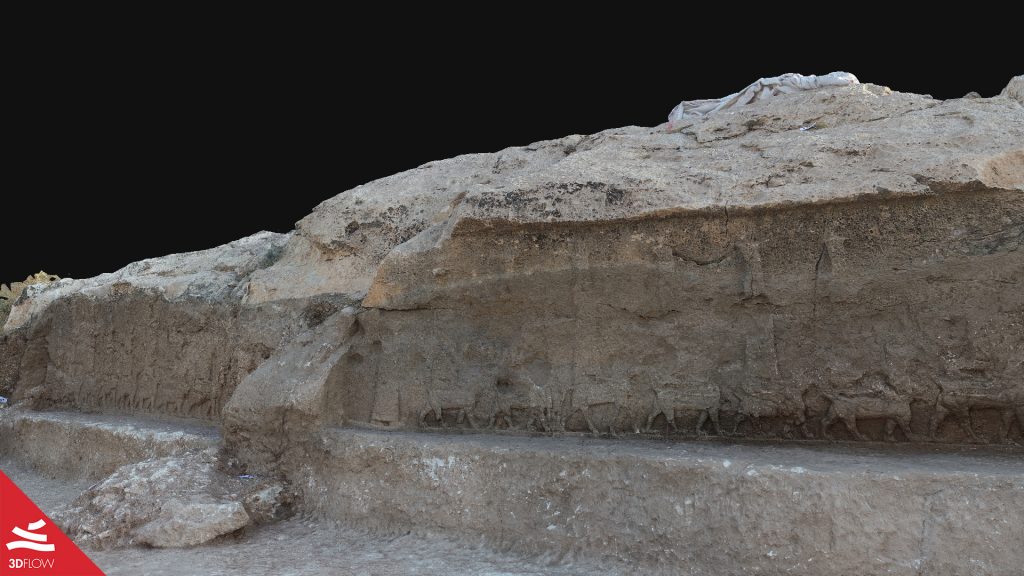
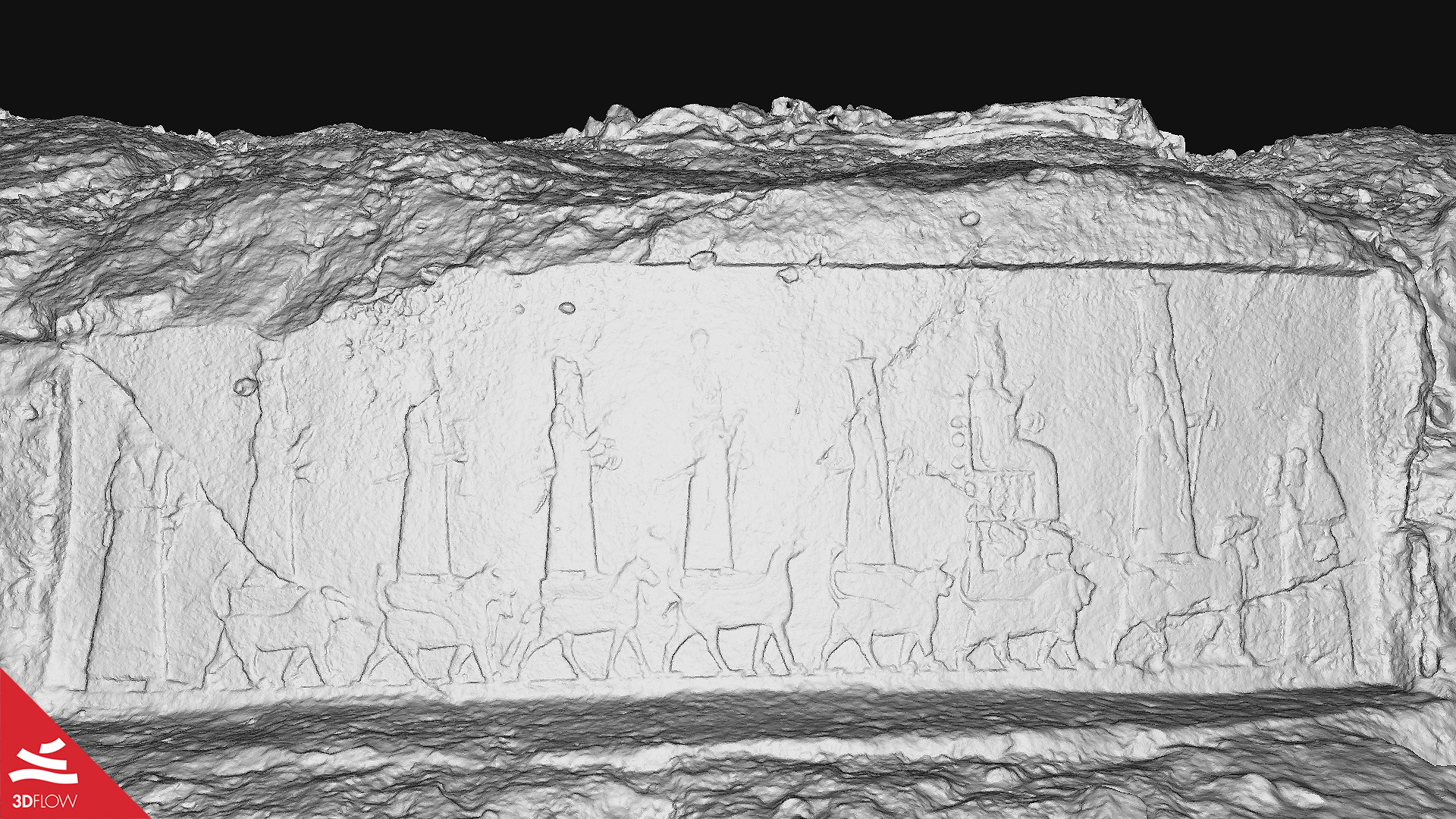
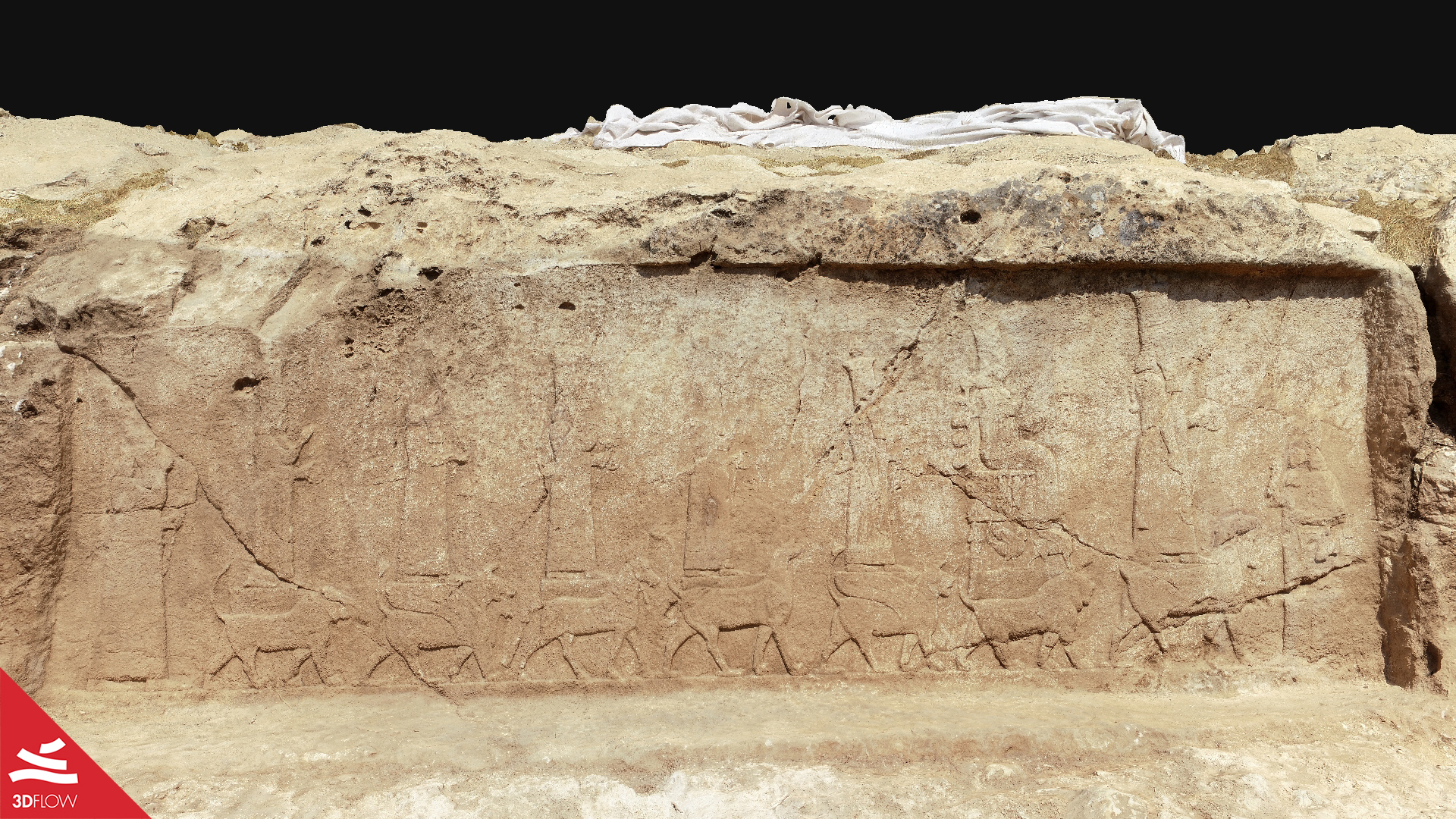
Geometry (left) and textured mesh (right) of bas-relief “R8”. ©Alberto Savioli – DIUM, UniUD.
The “Khaled al-Asaad” Award and the role of world archaeological discovery
Khaled al-Asaad was a Syrian archaeologist who, in 2015, paid with his life to protect the ancient cultural heritage of the city of Palmyra. Since then, the award identified as a tribute to his memory has become the only worldwide recognition dedicated to those archaeologists that, with their dedication and scientific expertise, are committed every day to discover, and at the same time protect, the cultural heritage of areas at risk. KIFAP fully met these requirements, which led to the subsequent collaboration and support by ALIPH, the only global fund created in favor of the protection and rehabilitation of cultural heritage in conflict and post-conflict areas. Later on, other partners that share the same values joined the cause, thus allowing the development of a concrete plan to protect and restore the Assyrian bas-reliefs of Faida.
At this link, you can read the complete press release in English, while below, you can see the YouTube video that showcases the highlights of the Italian-Kurdish archaeological mission.


